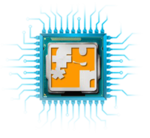Star Wars Rogue One Reshoots Will "Lighten the Mood" – Report
1 de Junho de 2016, 13:27
Yesterday it was reported that Rogue One, the upcoming standalone Star Wars movie, would be undergoing extensive reshoots this summer. New details have now emerged about why Disney are looking to shoot new material.
According to The Hollywood Reporter, studio execs feel that the film as it stands does not have the correct tone for a Star Wars movie. The site explains that while the first cut is far from a disaster, it does not have the feel of “classic” Star Wars, and is currently more of a “war movie.”
The reshoots will gather together director Gareth Edwards and much of the cast, and are intended to “lighten the mood, bring some levity into the story, and restore a sense of fun to the adventure.”
THR’s source goes on to state: “This is the closest thing to a prequel ever. This takes place just before A New Hope and leads up to the 10 minutes before that classic film begins. You have to match the tone!”
It is also rumoured that the reshoots may allow Edwards a chance to include an appearance from new Han Solo actor Alden Ehrenreich. Ehrenreich will play the younger version of space smuggler in the second Star Wars spinoff, set to be released in 2018.
Rogue One: A Star Wars Story hits cinemas on December 16, 2016. It stars Felicity Jones, Diego Luna, Ben Mendelsohn, Donnie Yen, Riz Ahmed, Forest Whitaker, and Mads Mikkelsen.
Source link
Research on e-Learning and ICT in Education
1 de Junho de 2016, 13:10This book aims to serve as a multidisciplinary forum covering technical, pedagogical, organizational, instructional, as well as policy aspects of ICT in Education and e-Learning. Special emphasis is given to applied research relevant to educational practice guided by the educational realities in schools, colleges, universities and informal learning organizations. In a more generic scope, the volume aims to encompass current trends and issues determining ICT integration in practice, including learning and teaching, curriculum and instructional design, learning media and environments, teacher education and professional development, assessment and evaluation, etc.
Salesforce compra empresa de digital commerce por US$ 2,8 bilhões
1 de Junho de 2016, 12:03

A Salesforce.com se move para além da oferta de ferramentas de CRM. A companhia desembolsou US$ 2,8 bilhões pela provedora de serviços Demandware. A aquisição insere um novo campo de negócios no portfólio da companhia: o Commerce Cloud.
O plano é combinar soluções de e-commerce, gestão de pedidos, ponto de venda, operação de lojas e inteligência preditiva em uma única plataforma.
A solução permitirá que usuários se conectem com seus próprios clientes de uma nova forma, garantiu a provedora, que pretende integrar a ferramenta com suas ofertas de vendas, marketing e analytics.
A Demandware atende empresas como L’Oreal e a rede de varejo britânica Marks & Spencer. A ideia é expandir o serviço para países onde a oferta ainda não está presente. “Estamos apenas começando a atuar no mercado japonês”, ilustrou Tom Ebling, CEO da empresa adquirida.
Fonte
Analista Programador PHP
1 de Junho de 2016, 9:34
Analista Programador PHP
Não Divulgado
– Postado por temonteiro
| 1 jun 2016
Av. Barão de Studart, 1324 – Pici, Fortaleza – CE, 60511-755, Brasil
Emprego
Descrição da Vaga
Requisitos
– Desenvolvimento de projetos utilizando padrões de projeto
– Conhecimento em PHP
– Experiência em banco de dados PostgreSQL e MySQL
– Controle de versão – GIT
– Conhecimento em modelagem de dados, modelo racional, modelagem E-R e manutenção de sistemas
– Experiências em metodologias, ferramentas e técnicas de desenvolvimento e manutenção de sistemas
– Conhecimento em sistemas operacionais Windows e Linux
– Criação e manutenção de ambientes (Apache)
– Ensino Superior em Análise de Sistemas e áreas afins
Local de trabalho: Aldeota
Relacionado
Como aplicar
Interessados, enviar currículo para focoerh@gmail.com
Relacionado
Job Categories: Free.
Job Types: Emprego.
Vaga expira em 5 days
Você deve fazer login ou criar uma conta, a fim de enviar uma vaga
Fonte
Vídeo comemorativo de Payday 2 revela teaser de Payday 3
1 de Junho de 2016, 9:26
É difícil falar o nome desse jogo em voz alta
Após adquirir os direitos da franquia Payday, a Starbreeze Studios não perdeu tempo e fez questão de confirmar seus planos de seguir adiante, além de deixar os jogadores de Payday 2 cientes de que a Overkill continuará responsável por trazer conteúdo para o game até o fim de 2017.
Todas as informações sobre o futuro de Payday 2 foram divulgadas por Almir Listo, produtor da Overkill, no vídeo de comemoração da centésima atualização do game. Você pode conferir abaixo o vídeo comemorativo e o teaser especial de Payday 3 logo no finalzinho:
A Starbreeze está fazendo um investimento imenso na franquia, chegando a casa de milhões de dólares prometidos em revendas para a publisher 505 Games (que irá ganhar 33% de toda a revenda da internet, algo que chega em torno de 40 milhões de dólares). Por enquanto, nenhuma informação foi acrescentada além do que vimos no teaser, então só nos resta aguardarmos por mais informações a medida que a E3 se aproxima.
Source link
This ‘Demonically Clever’ Backdoor Hides In a Tiny Slice of a Computer Chip
1 de Junho de 2016, 9:13
Security flaws in software can be tough to find. Purposefully planted ones—hidden backdoors created by spies or saboteurs—are often even stealthier. Now imagine a backdoor planted not in an application, or deep in an operating system, but even deeper, in the hardware of the processor that runs a computer. And now imagine that silicon backdoor is invisible not only to the computer’s software, but even to the chip’s designer, who has no idea that it was added by the chip’s manufacturer, likely in some farflung Chinese factory. And that it’s a single component hidden among hundreds of millions or billions. And that each one of those components is less than a thousandth of the width of a human hair.
In fact, researchers at the University of Michigan haven’t just imagined that computer security nightmare; they’ve built and proved it works. In a study that won the “best paper” award at last week’s IEEE Symposium on Privacy and Security, they detailed the creation of an insidious, microscopic hardware backdoor proof-of-concept. And they showed that by running a series of seemingly innocuous commands on their minutely sabotaged processor, a hacker could reliably trigger a feature of the chip that gives them full access to the operating system. Most disturbingly, they write, that microscopic hardware backdoor wouldn’t be caught by practically any modern method of hardware security analysis, and could be planted by a single employee of a chip factory.
“Detecting this with current techniques would be very, very challenging if not impossible,” says Todd Austin, one of the computer science professors at the University of Michigan who led the research. “It’s a needle in a mountain-sized haystack.” Or as Google engineer Yonatan Zunger wrote after reading the paper: “This is the most demonically clever computer security attack I’ve seen in years.”
Analog Attack
The “demonically clever” feature of the Michigan researchers’ backdoor isn’t just its size, or that it’s hidden in hardware rather than software. It’s that it violates the security industry’s most basic assumptions about a chip’s digital functions and how they might be sabotaged. Instead of a mere change to the “digital” properties of a chip—a tweak to the chip’s logical computing functions—the researchers describe their backdoor as an “analog” one: a physical hack that takes advantage of how the actual electricity flowing through the chip’s transistors can be hijacked to trigger an unexpected outcome. Hence the backdoor’s name: A2, which stands for both Ann Arbor, the city where the University of Michigan is based, and “Analog Attack.”
Here’s how that analog hack works: After the chip is fully designed and ready to be fabricated, a saboteur adds a single component to its “mask,” the blueprint that governs its layout. That single component or “cell”—of which there are hundreds of millions or even billions on a modern chip—is made out of the same basic building blocks as the rest of the processor: wires and transistors that act as the on-or-off switches that govern the chip’s logical functions. But this cell is secretly designed to act as a capacitor, a component that temporarily stores electric charge.

This diagram shows the size of the processor created by the researchers compared with the size of malicious cell that triggers its backdoor function.University of Michigan
Every time a malicious program—say, a script on a website you visit—runs a certain, obscure command, that capacitor cell “steals” a tiny amount of electric charge and stores it in the cell’s wires without otherwise affecting the chip’s functions. With every repetition of that command, the capacitor gains a little more charge. Only after the “trigger” command is sent many thousands of times does that charge hit a threshold where the cell switches on a logical function in the processor to give a malicious program the full operating system access it wasn’t intended to have. “It takes an attacker doing these strange, infrequent events in high frequency for a duration of time,” says Austin. “And then finally the system shifts into a privileged state that lets the attacker do whatever they want.”
That capacitor-based trigger design means it’s nearly impossible for anyone testing the chip’s security to stumble on the long, obscure series of commands to “open” the backdoor. And over time, the capacitor also leaks out its charge again, closing the backdoor so that it’s even harder for any auditor to find the vulnerability.
New Rules
Processor-level backdoors have been proposed before. But by building a backdoor that exploits the unintended physical properties of a chip’s components—their ability to “accidentally” accumulate and leak small amounts of charge—rather than their intended logical function, the researchers say their backdoor component can be a thousandth the size of previous attempts. And it would be far harder to detect with existing techniques like visual analysis of a chip or measuring its power use to spot anomalies. “We take advantage of these rules ‘outside of the Matrix’ to perform a trick that would [otherwise] be very expensive and obvious,” says Matthew Hicks, another of the University of Michigan researchers. “By following that different set of rules, we implement a much more stealthy attack.”
The Michigan researchers went so far as to build their A2 backdoor into a simple open-source OR1200 processor to test out their attack. Since the backdoor mechanism depends on the physical characteristics of the chip’s wiring, they even tried their “trigger” sequence after heating or cooling the chip to a range of temperatures, from negative 13 degrees to 212 degrees Fahrenheit, and found that it still worked in every case.

Here you can see the experimental setup the researchers used to test their backdoored processor at different temperatures.University of Michigan
As dangerous as their invention sounds for the future of computer security, the Michigan researchers insist that their intention is to prevent such undetectable hardware backdoors, not to enable them. They say it’s very possible, in fact, that governments around the world may have already thought of their analog attack method. “By publishing this paper we can say it’s a real, imminent threat,” says Hicks. “Now we need to find a defense.”
But given that current defenses against detecting processor-level backdoors wouldn’t spot their A2 attack, they argue that a new method is required: Specifically, they say that modern chips need to have a trusted component that constantly checks that programs haven’t been granted inappropriate operating-system-level privileges. Ensuring the security of that component, perhaps by building it in secure facilities or making sure the design isn’t tampered with before fabrication, would be far easier than ensuring the same level of trust for the entire chip.
They admit that implementing their fix could take time and money. But without it, their proof-of-concept is intended to show how deeply and undetectably a computer’s security could be corrupted before it’s ever sold. “I want this paper to start a dialogue between designers and fabricators about how we establish trust in our manufactured hardware,” says Austin. “We need to establish trust in our manufacturing, or something very bad will happen.”
Here’s the Michigan researchers’ full paper:
Source link
Chord Pickout 3.0
1 de Junho de 2016, 8:03

Immerse yourself in amazing augmented reality! Youmask applies live filters to your face in real time as you look into the front camera. Swipe left and right to change the filter. Youmask makes you look older, younger, turns you into a zombie and applies a bunch of special masks to your face.

Recognize faces and detect facial features within your .NET, C++, Delphi, and Java apps for Win, Mac, Linux, iOS and Android. Luxand FaceSDK is a true multi-platform, high-performance library for detecting and recognizing human faces on still photos and in live video streams.

Join the crowd and start making babies – you only need two photos to begin! More than 30 million babies made by using the technology. Featured in Graham Norton Show by Jennifer Lopez, and reviewed by Globo TV in Brazil, the technology is super popular and a great deal of fun. Just upload your and your partner’s photo, and BabyMaker will accurately produce a picture of your baby!

Create animated transitions of one face into another in just minutes with this fully automated face morphing program. It guesses basic spots automatically and makes realistic animations saving you time and effort. Using morphing you can add stunning effects into your home-made videos, create visual jokes for your friends, or master a unique animated avatar to represent yourself in on-line communities.

Logging into Windows has never been easier! Simply look into your webcam and you’ll be logged into your account in the blink of an eye. Blink! employs advanced face recognition technologies to provide automatic, quick and reliable login for one, or multiple, computer users.
Source link
O momento certo para a virada digital na empresa é agora!
1 de Junho de 2016, 8:02

A tecnologia, a mobilidade e as mídias sociais estão transformando com rapidez o comportamento dos consumidores ao redor do mundo, principalmente das gerações compostas pelos mais jovens (os famosos “Millennials”). As relações que os clientes mantêm com as empresas também. Por isso, é uma questão de sobrevivência que as companhias dos mais diversos segmentos se adaptem a esse ambiente digital, se quiserem continuar sendo relevantes nos próximos anos.
A transformação digital é uma mudança profunda pela qual estão passando as organizações mais cientes de seu papel na sociedade 3.0. Os principais impulsionadores para isso são melhorias operacionais e de experiência do cliente. Para tanto, é preciso transformar a empresa, tornar os processos mais simples, principalmente aqueles que suportam o negócio e aprimorar o relacionamento com o cliente, por meio da tecnologia.
Se no passado todos os dados dos clientes pertenciam à empresa e estavam contidos em seus cadastros internos, atualmente essa arquitetura de dados exige muito mais flexibilidade e integração, carecendo de investimento em inteligência para saber o que integrar, onde buscar esses dados e por quanto tempo mantê-los nas bases. Buscamos uma integração de dados estruturados e convencionais, com dados desestruturados (fotos, vídeo e áudio) e existentes em fontes externas à própria empresa, como redes sociais, por exemplo. O objetivo deste esforço é buscar compreender melhor padrões e preferências dos clientes, buscando, com isso, melhorar a sua experiência.
Se usarmos a tecnologia de big data e analytics conseguimos oferecer uma experiência aprimorada ao nosso cliente. Para tanto, devemos entender toda a cadeia que envolve o relacionamento de nossos clientes com a empresa, da compreensão e tratativa da demanda até o faturamento, passando pelo atendimento, processos de ofertas, vendas e processos de ativação e desativação de produtos.
Toda a cadeia deve trabalhar de forma eficiente, integrada e focando na experiência do usuário (em inglês, user experience). Neste campo “menos” é “mais”, ou seja, buscamos economizar passos nas interações com os clientes, retirando etapas desnecessárias do atendimento e do processo de vendas. Além disso, procuramos automatizar e digitalizar processos manuais, com o intuito de facilitar a jornada de nossos clientes e poder focar no que é mais importante de nosso negócio: a satisfação de nossos clientes. Por meio de algoritmos e tecnologia podemos entender quais soluções do portfólio se adaptam melhor às necessidades do mercado, bem como gerar inputs para a adequação do portfólio, a fim de que esteja sempre atualizado e relevante para o mercado.
A transformação digital no relacionamento com o cliente também é fundamental no processo de engajamento, afinal, ninguém gosta de desperdiçar tempo em passos desnecessários e/ou repetitivos. Um aliado para esta finalidade é o atendimento omni-channel, ou seja, uma plataforma que consiga funcionar como um concentrador de todas as formas possíveis de atendimento (por voz, mensagens, chat ou redes sociais) e deixar à escolha do cliente aquela que melhor se adeque à sua expectativa e ao momento do contato. Trata-se de reconhecer o empoderamento dos clientes na escolha dos canais que os atendam melhor.
As tecnologias e processos cognitivos automatizados também são importantíssimos para melhorar a eficiência de processos na cadeia de relacionamento com os clientes, como a gestão diária de milhares de ordens de serviço, gestão de mais de mil veículos que são utilizados para atendimento aos nossos clientes, buscando estabelecer melhores rotas, possibilitando agendamento do melhor horário para nossos clientes, e buscando fazer a gestão de nossa frota de uma maneira sustentável, buscando aliar economia e eficiência à nossa operação de campo.
Mas, para conseguir implementar essa profunda transformação na companhia, permeada por iniciativas que reúnem mobilidade, redes sociais e big data é preciso se preparar em termos de infraestrutura tecnológica, primeiramente. Neste sentido, a computação em nuvem é ideal para proporcionar implantações rápidas nas operações digitais, adicionando mais velocidade às implementações de produtos e gerando eficiência nos processos da operação. Também são essenciais adequações na estrutura técnica que suportam a operação, buscando um desenho organizacional com a capacitação necessária e organizada de forma moderna e ágil.
Futuramente, projetamos, ainda, que o processo de autoatendimento será muito mais difundido, permitindo aos clientes resolverem a maior parte das suas necessidades de maneira independente e automática, fazer compras, pagamentos, aumento do plano, entre outras funcionalidades. Entraremos em contato com as empresas por várias plataformas, preferencialmente móveis e de acordo com a conveniência do momento, de formas intuitivas e fáceis de usar.
As plataformas móveis, a cada dia, passam a ser reconhecidas como a primeira opção por parte de nossos clientes. A rede social, hoje, cria ambientes virtuais, o que, juntamente com big data e cloud computing cria um ambiente muito propício para a transformação digital. Organizações tradicionais enfrentam grandes desafios em busca dela, buscando tornarem-se mais simples e eficientes, galgando novos patamares na satisfação da expectativa de seus clientes. A hora da virada digital é agora!
*Eduardo Rabboni é chief digital officer da Algar Telecom.
Fonte
VI Olimpíada Cearense de Informática
1 de Junho de 2016, 5:33
A OLIMPÍADA CEARENSE DE INFORMÁTICA, OCI, é um evento organizado pelos grupos do Programa de Educação Tutorial (PET) dos cursos de Ciência da Computação da Universidade Estadual do Ceará (UECE) e de Computação da Universidade Federal do Ceará (UFC) com os objetivos de estimular o interesse pela Computação e pela Ciência em geral, promovendo a introdução de disciplinas de técnicas de programação de computadores nas escolas de Ensino Médio, introduzindo um pensamento lógico nos alunos, além de proporcionar novos desafios aos estudantes, buscando novos talentos e promovendo a aproximação entre a Universidade, os grupos PETs e os alunos dos Ensinos Fundamental e Médio. A OCI busca, também, promover a mudança da visão dos alunos do Ensinos Fundamental e Médio sobre o estudo da ciência da informação, tido como difícil e complexo.
Podem participar da olimpíada os alunos do sexto ao nono ano do ensino fundamental e os alunos do ensino médio das escolas públicas e privadas do estado do Ceará.
As inscrições dos alunos serão efetuadas por um representante da escola na qual eles estão matriculados.
Para maiores informações, consulte o regulamento.
Relacionado
Nenhuma visualização ainda
Tags: Ceará, Olimpíada de Informática, UECE, UFC
Fonte






